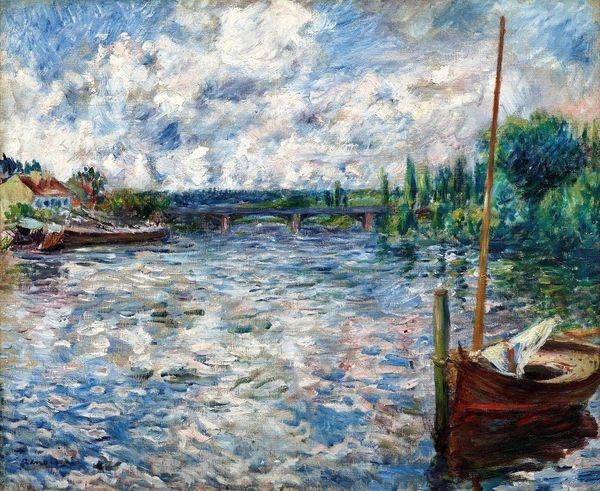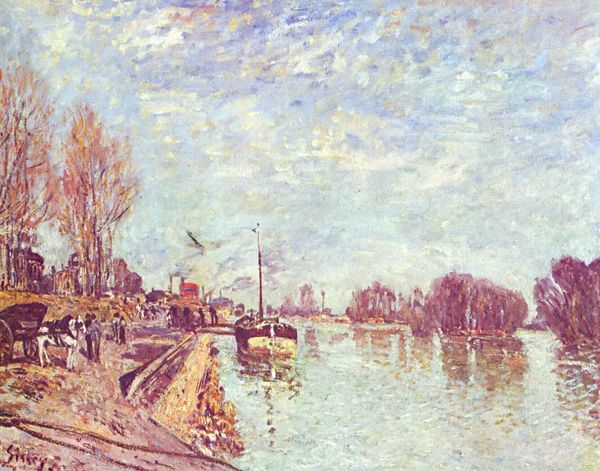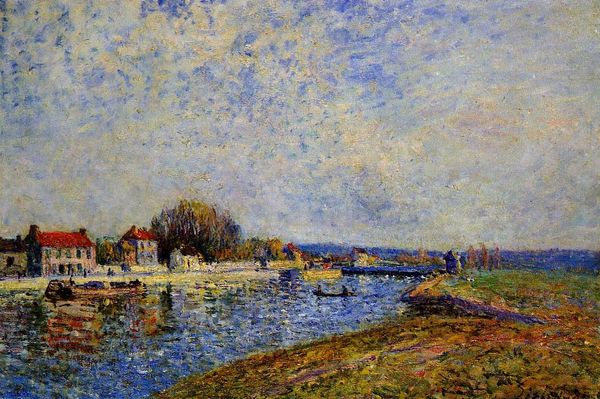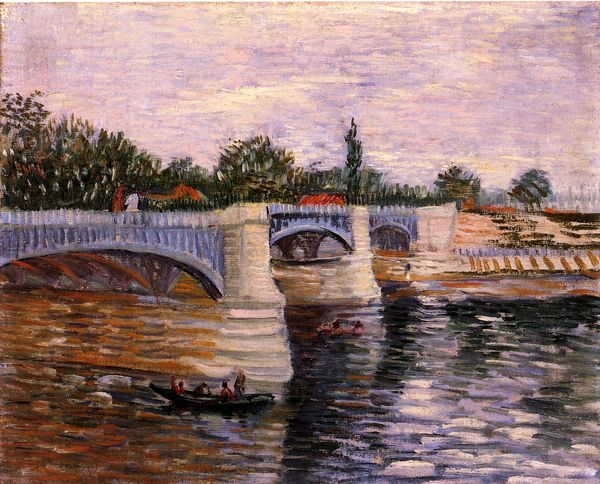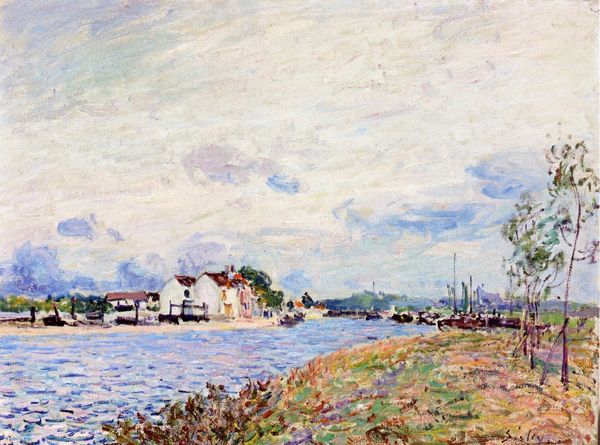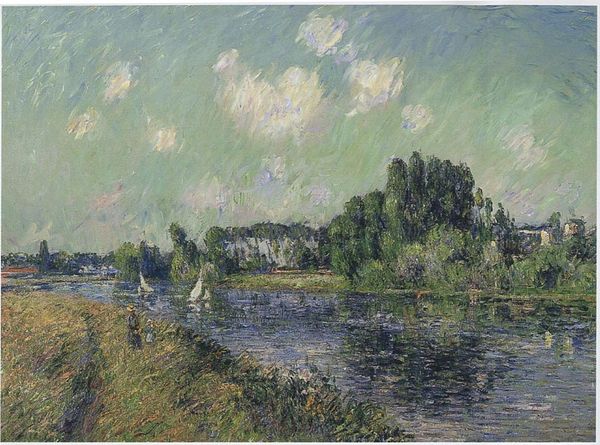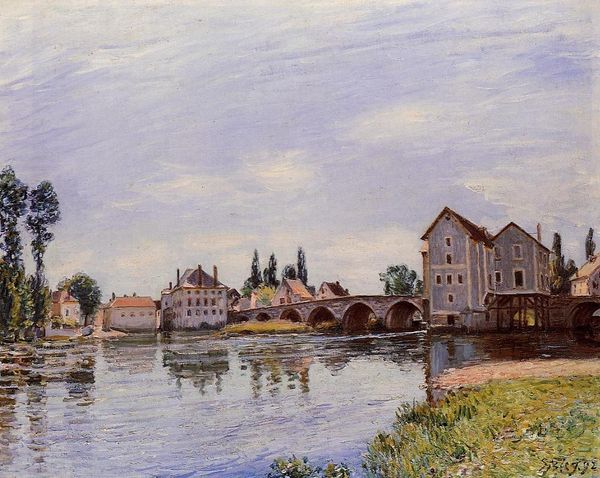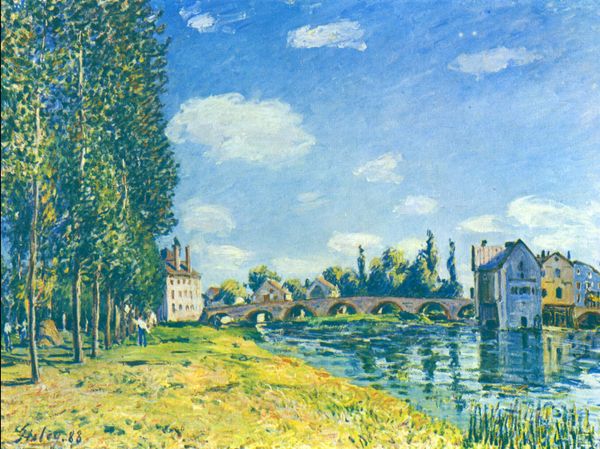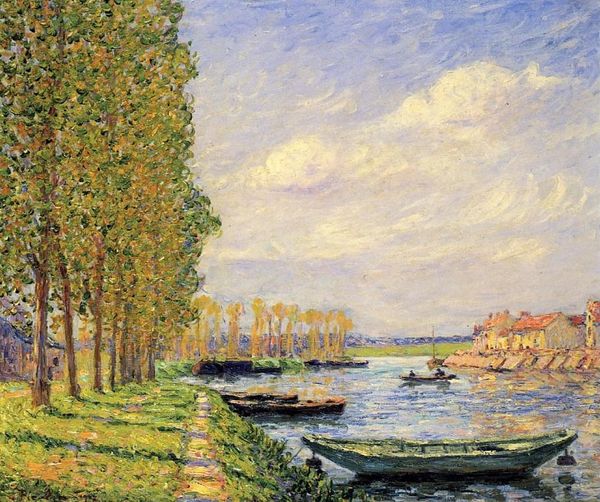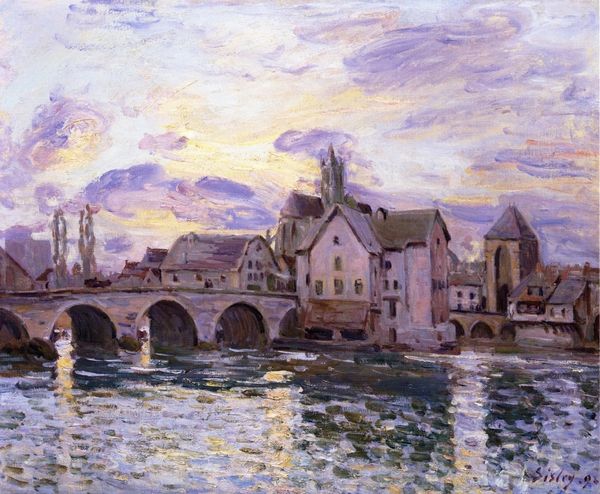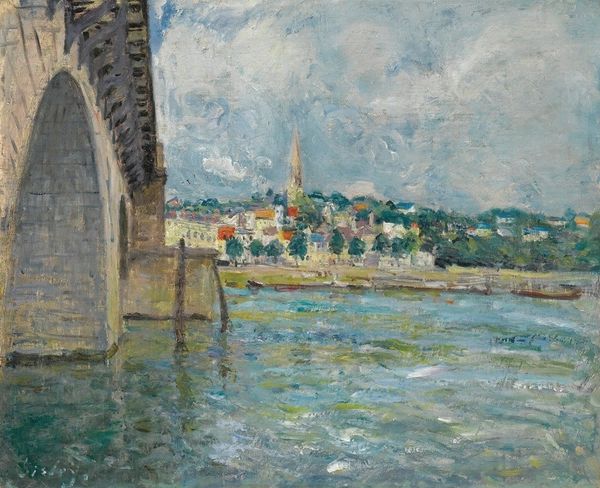
Copyright: Public domain
Editor: Here we have Alfred Sisley's "River Steamboat and Bridge," painted in 1871. The reflections in the water immediately caught my eye; the way he captured the light seems so modern for the time! How would you interpret this work? Curator: Considering Sisley's place within Impressionism, it’s important to look at the rapidly changing urban landscape and the public's relationship with industrial advancement at this time. The river and the bridge are rendered with quick brushstrokes, a very visible technique that announces the arrival of modern art. But this isn't simply about documenting change; the steam from the steamboat also carries political weight. How does this scene, which seems picturesque at first glance, fit into a broader conversation about progress? Editor: I see what you mean. The steam does almost mimic the clouds in the sky. So it isn't necessarily about progress and modernity, but perhaps the effect it has on nature? Curator: Precisely! And notice the prominent location of the bridge itself. It becomes a symbol of connectivity but also hints at the artificial structures that were beginning to dominate the natural world. Consider also where this painting was shown and sold. How might this presentation influenced its reception? Editor: Interesting! I hadn't thought about the exhibition history affecting our view of the piece. Thinking about how the context shapes the art itself really shifts how you can see something like Sisley's "River Steamboat and Bridge." Curator: Indeed. It's about seeing beyond the surface beauty to understand the painting's complex role in portraying societal values. Hopefully it made you aware about a way to look at this painting in an interpretative context, connecting art with larger forces. Editor: Definitely. I will be doing that moving forward. Thanks so much!
Comments
No comments
Be the first to comment and join the conversation on the ultimate creative platform.

